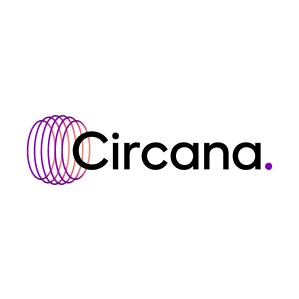- Circana

- Aug 5, 2024
- 3 min read
Updated: Apr 9
By Mike Ellgass, EVP Circana Media, and Michelle Snell, Director, Product Marketing, Media
Marketers have been in limbo the past few years waiting for Google to remove third-party cookies, only to experience delay after delay. Google’s recent announcement on its reversal for deprecating third-party cookies has left many marketers wondering: will they or won’t they?
Google’s new solution for increased privacy while maintaining third-party cookies is similar to the European Union’s General Data Protection Regulation. The good news is U.S. marketers don’t need to war-game scenarios. They can look to the European marketing landscape for what might come to pass with informed choice.
For European marketers, one of the key challenges from informed choice, which is the transparent communication at the point of personal data capture, is low cookie banner acceptance rates. In general, cookies are great — if people opt-in. However, the average cookie banner acceptance rate in the EU is 31%, on par with the U.S.’s cookie banner acceptance rate. This means U.S. marketers will miss out on more than two-thirds of traffic attributed to cookies, making it an unreliable input for media audiences.
The contextual marketing mirage
A seemingly logical solution to the challenges above is to lean into contextual targeting as it offers precision and accuracy compared to demographic or geographic targeting. The IAB Europe’s recent report “The Post Third-Party Cookie Countdown” reported 63% of European marketers see contextual advertising, which is advertising based on the content of the ad placement, as the best alternative to third-party cookies.
While contextual targeting has a role in an audience targeting strategy, it also has major pitfalls to consider, such as:
Intent: Contextual advertising may not translate to intent to purchase or convey where the customer is in the buying cycle.
Interest: Contextual advertising often relies on assuming why visitors are going to a website or using certain keywords.
Impressions: Misunderstandings about lack of intent and interest by the marketer may result in high costs per impression.
For U.S. marketers, Google’s reversal is a good reminder to diversify their audience targeting strategies. So what might that look like? Probably some combination of the following tactics:
Targeting Strategy | What is it? | What are common challenges? | When to use it? |
Demographic | Based on age, income, gender. | Not precise or accurate. Demographic elements don’t translate to purchase intent, e.g., only 33% of millennials own a pet. | In non-addressable mediums like linear TV, or when you have limited first- and second-party consumer data. |
Contextual | Based on the content (e.g. search or website). | Accurate but not precise. Does not take into account a user’s behavior, thus doesn’t always translate to purchase intent. | When you have qualitative consumer insights about your target audience. |
Behavioral | Based on behavior of user (e.g. follows or likes a page). | Precise but not accurate. A behavior based on an engagement metric doesn’t always translate to purchase intent. | Most commonly used in retargeting strategies and platforms. |
Purchase-based | Based on past purchase data. | Precise and accurate. Data quality and modeled versus non-modeled audiences ultimately impact return on ad spend. | When you have quantitative insights about past purchase behaviors and confident predictive behaviors. |
No matter what the future holds for cookies, purchase-based targeting is a must-have audience targeting strategy. Hundreds of Circana lift studies have shown that it outperforms all targeting types. That’s because purchase-based targeting leverages a consumer’s past purchases for either deterministic or predictive modeling.
If marketers have learned anything over the past few years, it’s this: Having a diverse media audience targeting strategy is the best defense against an industry in flux.






























